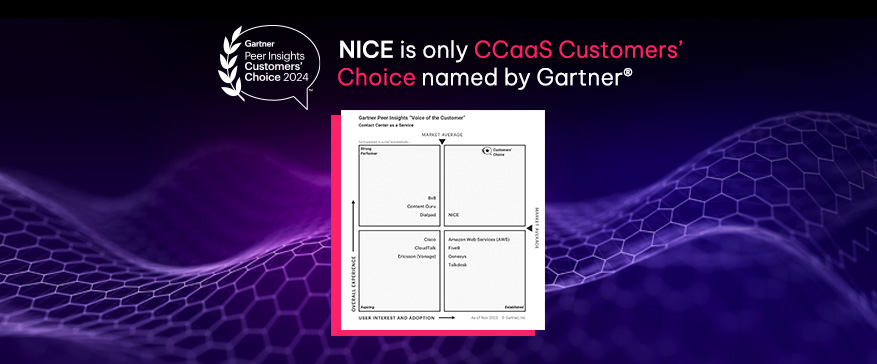AI-Powered Workforce Management (WFM) Tools are advanced software solutions that leverage artificial intelligence, machine learning, and predictive analytics to manage contact center staffing with precision and agility. These platforms help businesses forecast demand, optimize schedules, track real-time agent adherence, and react to unexpected changes on the fly—all while prioritizing employee engagement and service quality. AI integration enhances workforce management efficiency and personalized user experiences by automating tasks, improving data analysis, and facilitating intuitive interactions.
In traditional contact center environments,
workforce management often involves manual planning, static spreadsheets, and reactive staffing decisions. These outdated approaches lead to overstaffing, understaffing, burnout, long hold times, and missed SLAs. Companies are leveraging AI to enhance workforce management capabilities.
AI-powered WFM tools eliminate these inefficiencies by automating complex calculations, learning from past data, and continuously optimizing for changing conditions.
Whether you manage a local support team or a global customer service operation across time zones and channels, AI-powered WFM solutions allow you to maintain peak performance, align workforce resources with customer needs, and ensure exceptional service at scale. These solutions showcase the economic impact and efficiency improvements provided by AI-powered WFM solutions for specific companies.
Introduction to AI-Powered Workforce Management
AI-powered workforce management is revolutionizing the way businesses manage their workforce, enabling more strategic, efficient, and flexible resource allocation. By leveraging artificial intelligence, machine learning, and data analytics, AI-powered workforce management solutions can optimize staffing levels, improve employee engagement, and enhance operational efficiency. Successful workforce management is critical to driving business value, improving customer satisfaction, and staying competitive in today’s fast-paced market.
AI-powered workforce management software can automate administrative tasks, freeing up managers to focus on strategic decision-making and employee development. With AI-powered workforce management, businesses can create a more agile and adaptable workforce management strategy that meets the evolving demands of the industry. This transformation not only streamlines processes but also ensures that businesses are well-prepared to navigate the complexities of modern workforce dynamics.
Challenges in Traditional Workforce Management Systems
Traditional workforce management systems are often manual, time-consuming, and prone to inefficiencies and errors.
Planners, forecasters, and schedulers face the daunting task of creating optimal schedules that balance employees’ needs with business goals. Supervisors struggle to manage unexpected scheduling conflicts and maintain service-level compliance, often leading to reactive rather than proactive management.
Agents often lack the flexibility to control their schedules, leading to dissatisfaction and increased stress. The workforce is changing, with younger generations prioritizing work-life balance and seeking flexible work arrangements. The new economy introduces a more dynamic approach to employment, requiring businesses to adapt to changing workforce demands. Traditional workforce management systems often lack the scalability and flexibility to meet the evolving needs of the business. AI-powered workforce management solutions can help businesses overcome these challenges and create a more efficient, effective, and employee-centric workforce management strategy.
The Role of Artificial Intelligence in Workforce Management
Artificial intelligence is transforming the workforce management industry, enabling businesses to make smarter decisions, improve efficiency, and enhance employee engagement. AI-powered workforce management solutions can analyze vast amounts of data, identify patterns, and provide insights that inform strategic decision-making. By
automating routine tasks, AI frees up managers to focus on high-value activities such as employee development and customer satisfaction.
AI-powered workforce management solutions can optimize staffing levels, reduce labor costs, and improve operational efficiency. They help businesses navigate the complexities of a changing workforce, including the rise of the gig economy and the need for flexible work arrangements. These solutions provide clear visibility into schedules, staffing levels, and employee performance, enabling managers to make informed decisions. AI can enhance employee engagement and productivity by providing personalized schedules, flexible work arrangements, and real-time feedback. Ultimately, AI-powered workforce management solutions help businesses stay competitive in today’s fast-paced market by enabling them to adapt quickly to changing industry trends and customer demands.
Core Capabilities of AI-Powered Workforce Management Tools
AI-Driven Demand ForecastingForecasting is the foundation of effective workforce planning. AI-powered tools analyze historical contact volumes, service patterns, holidays, marketing campaigns, and even weather or world events to determine staffing requirements and predict future demand with high accuracy. These forecasts cover all channels—voice, chat, SMS, social, email—and account for volume spikes, seasonality, and regional fluctuations. This level of precision helps managers make proactive staffing decisions instead of reacting to emergencies.
Smart Scheduling with Skill and Preference MatchingOnce demand is forecasted, AI generates optimal agent schedules based on skill sets, certifications, languages, and availability. AI-driven systems eliminate traditional barriers associated with form-filling, allowing users to interact intuitively. Agents are matched to shifts that align with their strengths, while their individual preferences and work-life balance requests are also considered. Managers can create multiple schedule scenarios and let the AI select the one that achieves the highest efficiency and satisfaction metrics.
Real-Time Intraday ManagementThe implementation of AI tools in workforce management roles continuously monitors real-time operational data, including agent logins, breaks, queue lengths, SLA performance, and unexpected events like call spikes or absenteeism. If there’s a sudden influx of calls or a drop in agent availability, the platform automatically recommends actions—such as shift extensions, reassignments, or voluntary overtime prompts—to maintain service levels.
Mobile-First Agent Self-Scheduling and FlexibilityToday’s workforce expects control and flexibility. The integration of AI and scheduling technologies offers mobile apps or web portals where agents can view their schedules, request time off, bid on preferred shifts, swap shifts with peers, or volunteer for extra hours. This not only empowers agents but reduces the scheduling burden on managers and improves schedule adherence.
Compliance-Ready Scheduling AutomationFor businesses operating under strict regulatory environments or union rules, these platforms enforce scheduling policies such as mandatory rest periods, maximum hours, weekend rules, and labor laws. AI ensures that every schedule complies with regional standards, removing the need for manual audits and reducing risk.
Omnichannel Resource OptimizationIn a modern contact center, agents often work across multiple channels. AI-powered WFM tools factor in concurrency (such as handling two chats simultaneously) and asynchronous workloads (like email or social DMs) to ensure appropriate staffing across all touchpoints. The platform assigns agents based on channel expertise and real-time demand to prevent bottlenecks.
What-If Scenario Planning and SimulationPlanning for growth, crisis, or change is easy with AI modeling. Managers can simulate “what-if” scenarios like launching a new product, shifting to remote work, opening a new site, or changing SLA goals. The platform projects the staffing and cost implications of each scenario, allowing leaders to make informed strategic decisions with confidence. Intelligent automation plays a crucial role in optimizing performance and costs, enhancing both customer experiences and associate engagement.
Integrated Workforce Analytics and ReportingReporting goes beyond headcount and hours. These platforms provide detailed dashboards tracking occupancy, shrinkage, adherence, schedule accuracy, agent productivity, and the impact of staffing decisions on customer satisfaction. When integrated with QA and CSAT tools, WFM platforms show exactly how workforce changes affect customer experience outcomes.
Demand Forecasting and Optimal Scheduling
Demand forecasting is critical to successful workforce management,
enabling businesses to anticipate and prepare for changing customer demands. AI-powered demand forecasting solutions can analyze historical data, seasonal trends, and external factors to provide accurate predictions of future demand. This level of precision ensures that businesses can make proactive staffing decisions rather than reacting to emergencies.
Optimal scheduling is essential to ensuring that the right employees are in the right place at the right time to meet customer demands. AI-powered scheduling solutions can create optimal schedules that balance employees’ needs with business goals, taking into account factors such as employee preferences, skills, and availability. These solutions help businesses reduce labor costs, improve operational efficiency, and enhance customer satisfaction.
AI can help businesses navigate the complexities of multiple locations, shifts, and employee preferences to create optimal schedules that meet business needs. AI-powered demand forecasting and scheduling solutions provide real-time insights and alerts, enabling managers to make informed decisions and respond quickly to changing customer demands. By providing predictive analytics and scenario planning, AI helps businesses prepare for the future, anticipating and adapting to changing industry trends and customer demands.
Key Benefits
Maximized Operational EfficiencyAI-powered WFM eliminates inefficiencies in staffing, scheduling, and planning. By ensuring that the right number of agents with the right skills are available at the right times, businesses reduce idle time, cut costs, and maintain service consistency without overstaffing.
Higher SLA Compliance and Faster Response TimesWith real-time reforecasting and queue monitoring, service levels are actively protected. When queues start building, the system takes action—adjusting breaks, recommending reassignments, or pulling in additional agents. This reduces wait times, improves customer satisfaction, and ensures adherence to contractual SLAs.
Stronger Employee Engagement and RetentionAI-powered tools enhance employee satisfaction by promoting a flexible work environment and streamlining interactions. Integrating rewards into workforce management strategies, such as performance-based rewards and automated recognition, further boosts employee morale and productivity. Self-scheduling, flexibility, and fair shift distribution help employees maintain a better work-life balance. This leads to reduced attrition, lower absenteeism, and more stable teams.
Cost Savings Through Smart Resource AllocationAI-driven solutions assist companies in optimizing staffing, forecasting demands, and adapting to workforce changes. AI helps organizations reduce unplanned overtime, avoid underutilized shifts, and minimize overstaffing. Better planning means less reactive hiring or contracting, and more consistent labor spend. AI tools also identify schedule patterns that reduce costs without sacrificing performance.
Scalability and Global ReadinessAI-powered tools reduce the workload on supervisors by automating scheduling processes, allowing them to focus on strategic initiatives. Whether you’re managing five agents or five thousand, in one country or across multiple time zones, the platform can handle the complexity. Multi-language support, location-aware compliance rules, and flexible architecture ensure seamless scalability.
Faster Strategic Decisions with Predictive IntelligenceForecast accuracy and scenario planning reduce guesswork. Leaders can make smarter decisions about hiring, outsourcing, seasonal ramp-up, channel expansion, and remote work policies—backed by data and real-time simulation models.
Common Use Cases
Global Contact Centers with Multi-Site OperationsEnterprises with regional contact centers, BPO partners, and hybrid teams use AI-powered WFM to unify scheduling, apply global forecasting models, and manage agents across multiple time zones with local compliance built in. AI is transforming workforce management across various industries by enhancing workforce planning and personalizing employee experiences.
E-Commerce and Retail Brands During Peak SeasonsDuring high-traffic periods like Black Friday or holiday sales, retail brands use WFM tools to scale up rapidly. Real-time queue monitoring helps managers dynamically adjust coverage across sales, fulfillment, and return teams as demand shifts by the hour, optimizing employee engagement and productivity.
Healthcare Systems with Complex Scheduling NeedsHospitals and health plans use these tools to manage large access center teams, track adherence, ensure coverage for critical services like nurse lines and appointment scheduling, and ensure compliance with union rules and staffing mandates. AI analyzes users' behavior to improve workforce management, leading to more personalized and efficient experiences.
Financial Institutions Needing Precision and ComplianceBanks and insurance providers rely on AI-powered WFM to maintain agent coverage for complex cases and sensitive interactions—while staying compliant with financial regulations, audit requirements, and customer service SLAs.
Telecommunications and Utility ProvidersTelcos use WFM solutions to manage agents across technical support, billing, and outage response teams. AI dynamically routes resources where they’re needed most—especially during emergencies or network events.








